Assessment of Construction Workers’ Spontaneous Mental Fatigue Based on Non-Invasive and Multimodal In-Ear EEG Sensors
Abstract
:1. Introduction
2. Research Background
2.1. Management of Construction Workers’ Mental Load
2.2. Mental Fatigue Identification and Assessment
- EEG quantitatively reflects the brain’s electrical activity and offers an objective alternative to traditional survey-based assessments of mental states [25,26]. This non-invasive method measures voltage fluctuations from cortical neurons and has been widely used in research on mental load detection [27].
- Respiration signals are used to estimate an individual’s mental status (e.g., mental fatigue, vigilance, and drowsiness) for mobile healthcare [30]. Along with other neurophysiological responses (e.g., ECG, EEG, HR, and eye movement), the multiple linear regression model and the machine learning model can be developed to achieve a high correlation to workers’ mental statuses [31].
- Galvanic skin response (GSR) is a generic term that indicates electrical activities originating from sweat glands, epidermal tissues, and dermal tissues. As a non-invasive technical tool, GSR reflects the robustness and sensitivity of mental status [32].
- Blood lactate and sweat lactate have demonstrated strong correlations with the mental fatigue status of construction workers [33]. In particular, as a non-invasive indicator, a sweat lactate-based sensor holds the potential for further development in assessing fatigue on construction sites.
- Eye movement data contains abundant information that can reflect the development of human fatigue during extended cognitive tasks [34]. Eye-tracking data can be continuously and unobtrusively measured by interacting with the human interface. The captured features can be used for real-time human fatigue detection [35,36].
- Facial features (e.g., eye aspect ratio, eye distance, mouth aspect ratio, face area, and head motion) have been explored as indicators of the mental fatigue of construction workers [37]. Similar to the eye-moving tracking technology, facial features can be applied in other scenarios, such as watching videos, driving, and performing surgical operations.
2.3. In-Ear EEG Development and Applications
3. Materials and Methods
3.1. Overview
3.2. Multimodal In-Ear Sensors for Psychophysiological Signal Integration
3.3. Mental Fatigue Assessment Model Based on In-Ear Sensors
3.3.1. Dataset Construction for Model Establishment
Experiment Protocol and Data Collection
Feature Selection and Dataset Construction
3.3.2. Model Establishment for Mental Fatigue Assessment
4. Evaluation and Results
5. Discussion and Limitations
5.1. Effectiveness of the Proposed Monitoring Method of Spontaneous Mental Fatigue
5.2. Research Implications
5.3. Applicability in Construction Environments
- Although this study was conducted in a controlled laboratory environment, the design and preliminary testing of the in-ear device has demonstrated that it maintains stability and data integrity during typical physical movements. The snug fit and elastic rubber earpieces of the device ensure that the electrodes remain securely in place, preventing displacement and minimizing artifacts caused by movements. Furthermore, the use of Bluetooth low-energy technology ensures seamless data transmission even in dynamic environments. This wireless communication protocol is specifically designed for the efficient and secure transfer of brainwave signals to connected smartphones or computers, which is crucial in real-world construction settings where physical movement and environmental conditions may vary. The robustness of the Bluetooth connection further enhances the reliability of data collection, ensuring accurate and consistent information gathering. Given these design considerations and successful results from the preliminary tests, the device is capable of accurately collecting and transmitting data in real-world construction environments.
- In this study, we employed band-pass filtering and ICA to address extrinsic artifacts such as environmental noise, and intrinsic artifacts like eye movements. It should be noted that this study was conducted in a controlled laboratory environment without motion artifacts, which were not considered in the current preprocessing framework. This controlled setting enabled us to focus on developing and evaluating the subsequent classification model. Motion artifacts are a significant factor affecting EEG signal quality in real-world construction scenarios. Future work should involve developing advanced preprocessing techniques, potentially leveraging deep learning models, and addressing motion artifacts when transitioning to more dynamic environments. This approach will enhance the robustness and applicability of EEG-based mental fatigue monitoring under practical on-site conditions.
- Moreover, the successful application of this method at a larger scale brings additional considerations. The cost of widespread adoption could be substantial, potentially limiting its feasibility. Additionally, although the monitoring method is designed for ease of use, ensuring that all workers can comfortably and effectively utilize the technology, particularly over extended periods, may require additional training and support. Integrating the proposed monitoring method with existing safety protocols could also necessitate adjustments to current practices and the development of new guidelines. Addressing these issues with cost-effective solutions, user training programs, and protocol integration strategies will be essential for maximizing the utility of the proposed monitoring method in construction environments.
5.4. Limitations and Future Work
6. Conclusions
Author Contributions
Funding
Data Availability Statement
Conflicts of Interest
References
- Li, H.; Lu, M.; Hsu, S.; Gray, M.; Huang, T. Proactive behavior-based safety management for construction safety improvement. Saf. Sci. 2015, 75, 107–117. [Google Scholar] [CrossRef]
- Chen, J.; Song, X.; Lin, Z. Revealing the “invisible gorilla” in construction: Estimating construction safety through mental workload assessment. Autom. Constr. 2016, 63, 173–183. [Google Scholar] [CrossRef]
- Yang, J.; Ye, G.; Xiang, Q.; Kim, M.; Yue, H. Insights into the mechanism of construction workers’ unsafe behaviors from an individual perspective. Saf. Sci. 2021, 133, 105004. [Google Scholar] [CrossRef]
- Chen, J.; Wang, R.; Lin, Z.; Guo, X. Measuring the cognitive loads of construction safety sign designs during selective and sustained attention. Saf. Sci. 2018, 105, 9–21. [Google Scholar] [CrossRef]
- Xing, X.; Zhong, B.; Luo, H.; Rose, T.; Li, J.; Antwi-Afari, M. Effects of physical fatigue on the induction of mental fatigue of construction workers: A pilot study based on a neurophysiological approach. Autom. Constr. 2020, 120, 103381. [Google Scholar] [CrossRef]
- Zhang, M.; Murphy, L.; Fang, D.; Caban-Martinez, A. Influence of fatigue on construction workers’ physical and cognitive function. Occup. Med. 2015, 65, 245–250. [Google Scholar] [CrossRef] [PubMed]
- Furnham, A. Personality and Intelligence at Work; Routledge: London, UK, 2008. [Google Scholar]
- Fang, D.; Zhao, C.; Zhang, M. A Cognitive model of construction workers’ unsafe behaviors. J. Constr. Eng. Manag. 2016, 142, 04016039. [Google Scholar] [CrossRef]
- Ma, Q.; Shang, Q.; Bian, J.; Fu, H. A research on the application of physiological status information to productivity enhancement. In Electrical Engineering and Control: Selected Papers from the 2011 International Conference on Electric and Electronics (EEIC 2011), Nanchang, China, 20–22 June 2011; Springer: Berlin/Heidelberg, Germany, 2011; pp. 783–790. [Google Scholar] [CrossRef]
- Fang, W.; Wu, D.; Love, P.; Ding, L.; Luo, H. Physiological computing for occupational health and safety in construction: Review, challenges and implications for future research. Adv. Eng. Inform. 2022, 54, 101729. [Google Scholar] [CrossRef]
- Wang, Y.; Huang, Y.; Gu, B.; Cao, S.; Fang, D. Identifying mental fatigue of construction workers using EEG and deep learning. Autom. Constr. 2023, 151, 104887. [Google Scholar] [CrossRef]
- Ke, J.; Du, J.; Luo, X. The effect of noise content and level on cognitive performance measured by electroencephalography (EEG). Autom. Constr. 2021, 130, 103836. [Google Scholar] [CrossRef]
- Ke, J.; Zhang, M.; Luo, X.; Chen, J. Monitoring distraction of construction workers caused by noise using a wearable Electroencephalography (EEG) device. Autom. Constr. 2021, 125, 103598. [Google Scholar] [CrossRef]
- Wang, D.; Chen, J.; Zhao, D.; Dai, F.; Zheng, C.; Wu, X. Monitoring workers’ attention and vigilance in construction activities through a wireless and wearable electroencephalography system. Autom. Constr. 2017, 82, 122–137. [Google Scholar] [CrossRef]
- Xing, X.; Li, H.; Li, J.; Zhong, B.; Skitmore, M. A multicomponent and neurophysiological intervention for the emotional and mental states of high-altitude construction workers. Autom. Constr. 2019, 105, 102836. [Google Scholar] [CrossRef]
- Jeon, J.; Cai, H. Wearable EEG-based construction hazard identification in virtual and real environments: A comparative study. Saf. Sci. 2023, 165, 106213. [Google Scholar] [CrossRef]
- Nino, V.; Claudio, D.; Monfort, S. Evaluating the effect of perceived mental workload on work body postures. Int. J. Ind. Ergon. 2023, 93, 103399. [Google Scholar] [CrossRef]
- Aryal, A.; Ghahramani, A.; Becerik-Gerber, B. Monitoring fatigue in construction workers using physiological measurements. Autom. Constr. 2017, 82, 154–165. [Google Scholar] [CrossRef]
- Lerman, S.; Eskin, E.; Flower, D.; George, E.; Moore-Ede, M. Fatigue risk management in the workplace. J. Occup. Environ. Med. 2012, 54, 231–258. [Google Scholar] [CrossRef] [PubMed]
- Cheng, T.; Migliaccio, G.; Teizer, J.; Gatti, U. Data Fusion of Real-time Location Sensing (RTLS) and Physiological Status Monitoring (PSM) for Ergonomics Analysis of Construction Workers. J. Comput. Civ. Eng. 2013, 27, 320–335. [Google Scholar] [CrossRef]
- Hopstaken, J.; Linden, D.; Kompier, M. A Multifaceted Investigation of the Link between Mental Fatigue and Task Disengagement. Psychophysiology 2015, 52, 305–315. [Google Scholar] [CrossRef]
- Shahid, A.; Wilkinson, K.; Marcu, S.; Shapiro, C. Fatigue Severity Scale (FSS). In STOP, THAT and One Hundred Other Sleep Scales; Springer: Berlin/Heidelberg, Germany, 2011; pp. 167–168. [Google Scholar] [CrossRef]
- Cheng, B.; Fan, C.; Fu, H.; Huang, J.; Chen, H.; Luo, X. Measuring and Computing Cognitive Statuses of Construction Workers Based on Electroencephalogram: A Critical Review. IEEE Trans. Comput. Soc. Syst. 2022, 9, 1644–1659. [Google Scholar] [CrossRef]
- Jebelli, H.; Hwang, S.; Lee, S. EEG-based workers’ stress recognition at construction sites. Autom. Constr. 2018, 93, 315–324. [Google Scholar] [CrossRef]
- Hwang, S.; Jebelli, H.; Choi, B.; Choi, M.; Lee, S. Measuring workers’ emotional state during construction tasks using wearable EEG. J. Constr. Eng. Manag. 2018, 144, 04018050. [Google Scholar] [CrossRef]
- Diaz-Piedra, C.; Rieiro, H.; Di Stasi, L. Monitoring army drivers’ workload during off-road missions: An experimental controlled field study. Saf. Sci. 2021, 134, 105092. [Google Scholar] [CrossRef]
- Jebelli, H.; Hwang, S.; Lee, S. EEG Signal-Processing Framework to Obtain High-Quality Brain Waves from an Off-the-Shelf Wearable EEG Device. J. Comput. Civ. Eng. 2017, 32, 04017070. [Google Scholar] [CrossRef]
- Malik, M.; Bigger, J.; Camm, A.; Kleiger, R.; Malliani, A.; Moss, A.; Schwartz, P. Heart rate variability: Standards of measurement, physiological interpretation, and clinical use. Eur. Heart J. 1996, 17, 354–381. [Google Scholar] [CrossRef]
- Liao, P.; Sun, X.; Zhang, D. A multimodal study to measure the cognitive demands of hazard recognition in construction workplaces. Saf. Sci. 2023, 133, 105010. [Google Scholar] [CrossRef]
- Hema, B.; Gopi, V. A novel awareness and alertness implementation on biometric authentication in moving vehicle. Int. J. IT Eng. 2013, 1, 13–28. [Google Scholar]
- Lee, B.; Lee, B.; Chung, W. Mobile healthcare for automatic driving sleep-onset detection using wavelet-based EEG and respiration signals. Sensors 2014, 14, 17915–17936. [Google Scholar] [CrossRef] [PubMed]
- Picard, R.; Fedor, S.; Ayzenberg, Y. Multiple Arousal Theory and Daily-Life Electrodermal Activity Asymmetry. Emot. Rev. 2016, 8, 62–75. [Google Scholar] [CrossRef]
- Ma, J.; Li, H.; Huang, X.; Fang, B.; Zhao, Z.; Mehmood, I.; Liu, Y.; Zhang, G.; Fang, X.; Arashpour, M.; et al. Fatigue assessment of construction equipment operators using a sweat lactate biosensor. Int. J. Ind. Ergon. 2023, 96, 103472. [Google Scholar] [CrossRef]
- Li, J.; Li, H.; Wang, H.; Umer, W.; Fu, H.; Xing, X. Evaluating the impact of mental fatigue on construction equipment operators’ ability to detect hazards using wearable eye-tracking technology. Autom. Constr. 2019, 105, 102835. [Google Scholar] [CrossRef]
- Li, H.; Wang, D.; Chen, J.; Luo, X.; Li, J.; Xing, X. Pre-service fatigue screening for construction workers through wearable EEG-based signal spectral analysis. Autom. Constr. 2019, 106, 102851.1–102851.11. [Google Scholar] [CrossRef]
- Li, J.; Li, H.; Umer, W.; Wang, H.; Hou, J. Identification and classification of construction equipment operators’ mental fatigue using wearable eye-tracking technology. Autom. Constr. 2020, 109, 103000. [Google Scholar] [CrossRef]
- Mehmood, I.; Li, H.; Umer, W.; Arsalan, A.; Shakeel, M.; Anwer, S. Validity of facial features’ geometric measurements for real-time assessment of mental fatigue in construction equipment operators. Adv. Eng. Inform. 2022, 54, 101777. [Google Scholar] [CrossRef]
- Majid, F.; Majid, M.; Rashid, H.; Ali, R.; Shinji, M. Effects of mental workload on physiological and subjective responses during traffic density monitoring: A field study. Appl. Ergon. 2016, 52, 95–103. [Google Scholar] [CrossRef]
- Reinerman-Jones, L.; Matthews, G.; Mercado, J. Detection tasks in nuclear power plant operation: Vigilance decrement and physiological workload monitoring. Saf. Sci. 2016, 88, 97–107. [Google Scholar] [CrossRef]
- Ishii, A.; Tanaka, M.; Watanabe, Y. Neural mechanisms of mental fatigue. Rev. Neurosci. 2014, 25, 469–479. [Google Scholar] [CrossRef]
- Li, W.; He, Q.; Fan, X.; Fei, Z. Evaluation of driver fatigue on two channels of EEG data. Neurosci. Lett. 2012, 506, 235–239. [Google Scholar] [CrossRef]
- Duc, B. Development of Neurophysiological Approaches for Monitoring and Intervening Mental Fatigue; National University of Singapore: Singapore, 2014; Available online: http://scholarbank.nus.edu.sg/handle/10635/53783 (accessed on 29 August 2024).
- Yin, Z.; Zhang, J. Task-generic mental fatigue recognition based on neurophysiological signals and dynamical deep extreme learning machine. Neurocomputing 2018, 283, 266–281. [Google Scholar] [CrossRef]
- Mudiyanselage, S.; Nguyen, P.; Rajabi, M.; Akhavian, R. Automated workers ergonomic risk assessment in manual material handling using sEMG wearable sensors and machine learning. Electronics 2021, 10, 2558. [Google Scholar] [CrossRef]
- Hajinoroozi, M.; Zhang, J.; Huang, Y. Driver’s fatigue prediction by deep covariance learning from EEG. In Proceedings of the International Conference on Systems, Man, and Cybernetics (SMC), Banff, AB, Canada, 5–8 October 2017; Institute of Electrical and Electronics Engineers: Piscataway, NJ, USA, 2017; pp. 240–245. [Google Scholar] [CrossRef]
- Tang, J.; Li, X.; Yang, Y.; Zhang, W. Euclidean space data alignment approach for multi-channel LSTM network in EEG based fatigue driving detection. Electron. Lett. 2021, 57, 836–838. [Google Scholar] [CrossRef]
- Mehmood, I.; Li, H.; Qarout, Y.; Umer, W.; Arsalan, A.; Wu, H.; Hussain, M.; Antwi-Afari, M. Deep learning-based construction equipment operators’ mental fatigue classification using wearable EEG sensor data. Adv. Eng. Inform. 2023, 56, 101978. [Google Scholar] [CrossRef]
- Liao, L.; Liao, K.; Wei, N.; Ye, Y.; Li, L.; Wu, Z. A holistic evaluation of ergonomics application in health, safety, and environment management research for construction workers. Saf. Sci. 2023, 165, 106198. [Google Scholar] [CrossRef]
- Xing, X.; Li, H.; Zhong, B.; Qiu, L.; Luo, H.; Yu, Q.; Hou, J.; Li, L. Assessment of noise annoyance level of shield tunneling machine drivers under noisy environments based on combined physiological activities. Appl. Acoust. 2021, 179, 108045. [Google Scholar] [CrossRef]
- Looney, D.; Kidmose, P.; Park, C.; Ungstrup, M.; Rank, M.; Rosenkranz, K.; Mandic, D. The in-the-ear recording concept: User-centered and wearable brain monitoring. IEEE Pulse 2012, 3, 32–42. [Google Scholar] [CrossRef] [PubMed]
- Goverdovsky, V.; Looney, D.; Kidmose, P.; Mandic, D. In-Ear EEG From Viscoelastic Generic Earpieces: Robust and Unobtrusive 24/7 Monitoring. IEEE Sens. J. 2016, 16, 271–277. [Google Scholar] [CrossRef]
- Kappel, S.; Rank, M.; Toft, H.; Andersen, M.; Kidmose, P. Dry-Contact Electrode Ear-EEG. IEEE Trans. Biomed. Eng. 2019, 66, 150–158. [Google Scholar] [CrossRef]
- Mikkelsen, K.; Villadsen, D.; Otto, M.; Kidmose, P. Automatic sleep staging using ear-EEG. BioMed. Eng. OnLine 2017, 16, 111. [Google Scholar] [CrossRef]
- Bleichner, M.; Mirkovic, B.; Debener, S. Identifying auditory attention with ear-EEG: cEEGrid versus high-density cap-EEG comparison. J. Neural Eng. 2016, 13, 066004. [Google Scholar] [CrossRef]
- Nakamura, T.; Alqurashi, Y.; Morrell, M.; Mandic, D. Automatic detection of drowsiness using in-ear EEG. In Proceedings of the 2018 International Joint Conference on Neural Networks (IJCNN), Rio de Janeiro, Brazil, 8–13 July 2018; pp. 1–6. [Google Scholar] [CrossRef]
- Choi, S.; Han, C.; Choi, G.; Shin, J.; Song, K.; Im, C.; Hwang, H. On the Feasibility of Using an Ear-EEG to Develop an Endogenous Brain-Computer Interface. Sensors 2018, 18, 2856. [Google Scholar] [CrossRef]
- Hong, S.; Kwon, H.; Choi, S.; Park, K. Intelligent system for drowsiness recognition based on ear canal electroencephalography with photoplethysmography and electrocardiography. Inf. Sci. 2018, 453, 302–322. [Google Scholar] [CrossRef]
- Jeong, D.; Jeong, J. In-Ear EEG Based Attention State Classification Using Echo State Network. Brain Sci. 2020, 6, 321. [Google Scholar] [CrossRef]
- Tabar, Y.; Mikkelsen, K.; Rank, M.; Hemmsen, M.; Kidmose, P. Ear-EEG for sleep assessment: A comparison with actigraphy and PSG. Sleep Breath. 2021, 25, 1693–1705. [Google Scholar] [CrossRef]
- Han, C.; Choi, G.; Hwang, H. Deep Convolutional Neural Network Based Eye States Classification Using Ear-EEG. Expert Syst. Appl. 2022, 192, 116443. [Google Scholar] [CrossRef]
- Antwi-Afari, M.; Anwer, S.; Umer, W.; Mi, H.; Yu, Y.; Moon, S.; Hossain, U. Machine learning-based identification and classification of physical fatigue levels: A novel method based on a wearable insole device. Int. J. Ind. Ergon. 2022, 93, 103404. [Google Scholar] [CrossRef]
- Jiao, Y.; Wang, X.; Kang, Y.; Zhong, Z.; Chen, W. A quick identification model for assessing human anxiety and thermal comfort based on physiological signals in a hot and humid working environment. Int. J. Ind. Ergon. 2023, 94, 103423. [Google Scholar] [CrossRef]
- Chen, R.; Wang, X.; Zhang, L.; Yi, W.; Ke, Y.; Qi, H.; He, F.; Zhao, X.; Wang, X.; Ming, D.; et al. Research on multi-dimensional N-back task induced EEG variations. In Proceedings of the 37th Annual International Conference of the IEEE Engineering in Medicine and Biology Society (EMBC), Milan, Italy, 25–29 August 2015; pp. 5163–5166. [Google Scholar] [CrossRef]
- Micklewright, D.; St Clair Gibson, A.; Gladwell, V.; Al Salman, A. Development and Validity of the Rating-of-Fatigue Scale. Sports Med. 2017, 47, 2375–2393. [Google Scholar] [CrossRef]
- Jagtap, S.; Uplane, M. The impact of digital filtering to ECG analysis: Butterworth filter application. In Proceedings of the 2012 International Conference on Communication, Information & Computing Technology (ICCICT), Mumbai, India, 19–20 October 2012; pp. 1–6. [Google Scholar] [CrossRef]
- Sargolzaei, A.; Faez, K.; Sargolzaei, S. A new robust wavelet based algorithm for baseline wandering cancellation in ECG signals. In Proceedings of the 2009 IEEE International Conference on Signal and Image Processing Applications, Kuala Lumpur, Malaysia, 18–19 November 2010. [Google Scholar] [CrossRef]
- Pan, J.; Tompkins, W. A real-time QRS detection algorithm. IEEE Trans. Biomed. Eng. 2007, BME–32, 230–236. [Google Scholar] [CrossRef] [PubMed]
- Chai, R.; Naik, G.; Nguyen, T.; Ling, S.; Tran, Y.; Craig, A.; Nguyen, H. Driver fatigue classification with independent component by entropy rate bound minimization analysis in an EEG-based system. IEEE J. Biomed. Health Inform. 2017, 21, 715–724. [Google Scholar] [CrossRef]
- Zhu, S.; Qi, J.; Hu, J.; Hao, S. A new approach for product evaluation based on integration of EEG and eye-tracking. Adv. Eng. Inform. 2022, 52, 101601. [Google Scholar] [CrossRef]
- Hall, M. Correlation-based feature selection of discrete and numeric class machine learning. In Proceedings of the Seventeenth International Conference on Machine Learning, San Francisco, CA, USA, 29 June–2 July 2000; pp. 359–366. [Google Scholar]
- Guo, F.; Li, M.; Hu, M.; Li, F.; Lin, B. Distinguishing and quantifying the visual aesthetics of a product: An integrated approach of eye-tracking and EEG. Int. J. Ind. Ergon. 2019, 71, 47–56. [Google Scholar] [CrossRef]
- Li, F.; Chen, C.; Xu, G.; Li, P.; Liu, Y. Proactive mental fatigue detection of traffic control operators using bagged trees and gaze-bin analysis. Adv. Eng. Inform. 2019, 42, 100987. [Google Scholar] [CrossRef]
- Ye, C.; Yin, Z.; Zhao, M.; Tian, Y.; Sun, Z. Identification of mental fatigue levels in a language understanding task based on multi-domain EEG features and an ensemble convolutional neural network. Biomed. Signal Process. Control. 2022, 72, 103360. [Google Scholar] [CrossRef]
- James, G.; Witten, D.; Hastie, T.; Tibshirani, R. An Introduction to Statistical Learning: With Applications in R; Springer: Berlin/Heidelberg, Germany, 2013; Volume 103. [Google Scholar] [CrossRef]
- Takahashi, K.; Yamamoto, K.; Kuchiba, A.; Koyama, T. Confidence interval for micro-averaged F1 and macro-averaged F1 scores. Appl. Intell. 2022, 52, 4961–4972. [Google Scholar] [CrossRef] [PubMed]
- Fang, X.; Li, H.; Zhang, S.; Wang, X.; Wang, C. A combined finite element and deep learning network for structural dynamic response estimation on concrete gravity dam subjected to blast loads. Def. Technol. 2023, 24, 298–313. [Google Scholar] [CrossRef]
- Sarkar, A.; Singh, A.; Chakraborty, R. A deep learning-based comparative study to track mental depression from EEG data. Neurosci. Inform. 2022, 2, 100039. [Google Scholar] [CrossRef]
- Wang, J.; Shi, J.; Xu, Y.; Zhong, H.; Li, G.; Tian, J.; Xu, W.; Gao, Z.; Jiang, Y.; Jiao, W.; et al. A New Strategy for Mental Fatigue Detection Based on Deep Learning and Respiratory Signal. In Proceedings of the 11th International Conference on Computer Engineering and Networks, Hechi, China, 21–25 October 2021. [Google Scholar] [CrossRef]
- Rastgoo, M.; Nakisa, B.; Maire, F.; Rakotonirainy, A.; Chandran, V. Automatic Driver Stress Level Classification Using Multimodal Deep Learning. Expert Syst. Appl. 2019, 138, 112793. [Google Scholar] [CrossRef]
- Hu, X.; Nakatsuru, S.; Ban, Y.; Fukui, R.; Warisawa, S. Physiology-Based Approach for Estimation of Mental Fatigue Levels with Both High Time Resolution and High Level of Granularity. Inform. Med. Unlocked 2021, 24, 100594. [Google Scholar] [CrossRef]
- Nishtha, P.; Devanjali, R.; Goldie, G.; Ponnurangam, K.; Mesay, S. Stress Classification Using Brain Signals Based on LSTM Network. Comput. Intell. Neurosci. 2022, 2022, 7607592. [Google Scholar] [CrossRef]
- Brocal, F. Brain-computer interfaces in safety and security fields: Risks and applications. Saf. Sci. 2023, 160, 106051. [Google Scholar] [CrossRef]
- Fathi, A.; Ganji, M.; Boiroux, D.; Bengtsson, H.; Breton, M. Intermittent control for safe long-acting insulin intensification for type 2 diabetes: In-silico experiments. In Proceedings of the 2023 IEEE Conference on Control Technology and Applications (CCTA), Bridgetown, Barbados, 16–18 August 2023; pp. 534–539. [Google Scholar] [CrossRef]
- Rajabi, M.; Taghaddos, H.; Zahrai, S. Improving emergency training for earthquakes through immersive virtual environments and anxiety tests: A case study. Buildings 2022, 12, 1850. [Google Scholar] [CrossRef]
- Morteza, A.; Ilbeigi, M.; Schwed, J. A blockchain information management framework for construction safety. In Proceedings of the ASCE International Conference on Computing in Civil Engineering, Orlando, FL, USA, 12–14 September 2021; pp. 342–349. [Google Scholar] [CrossRef]

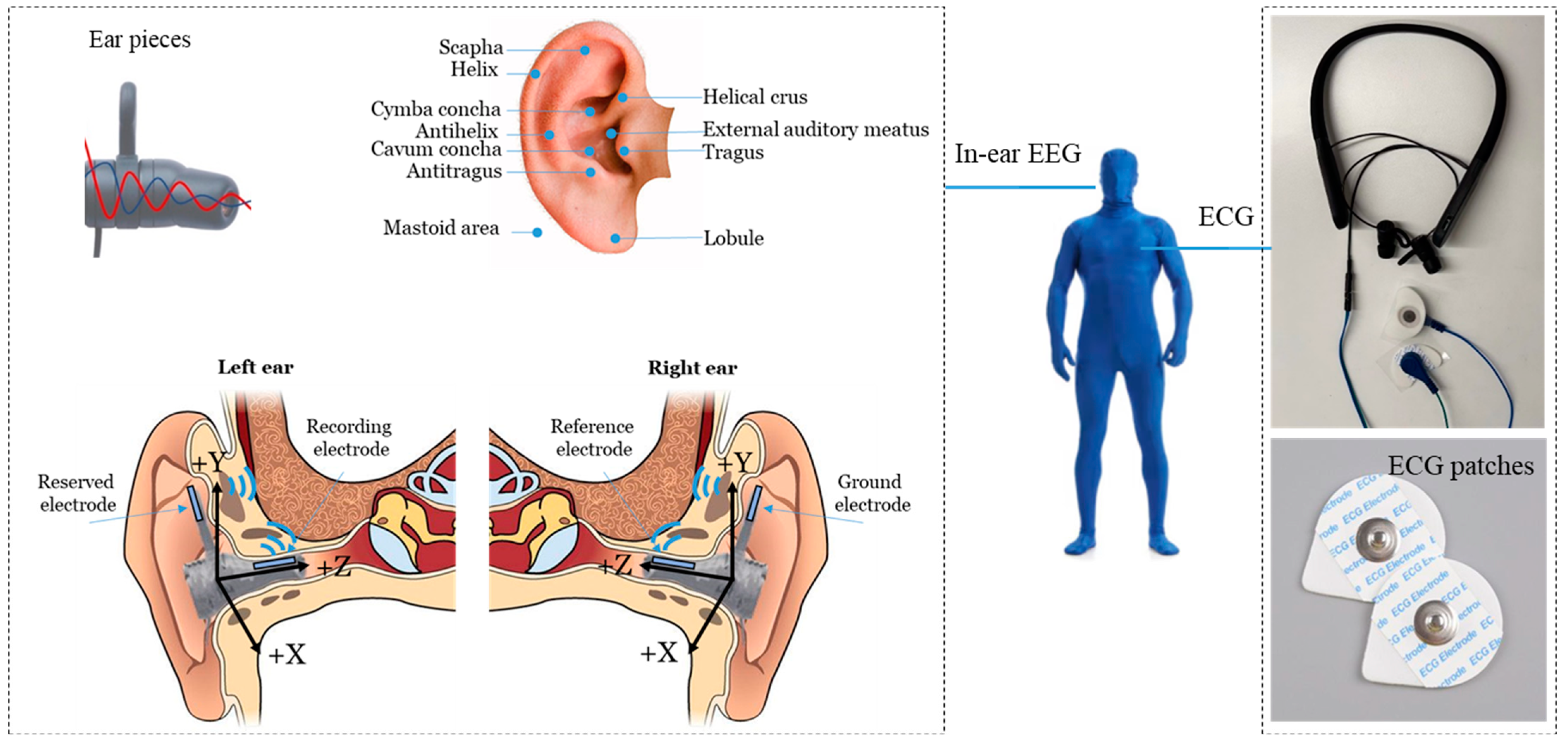

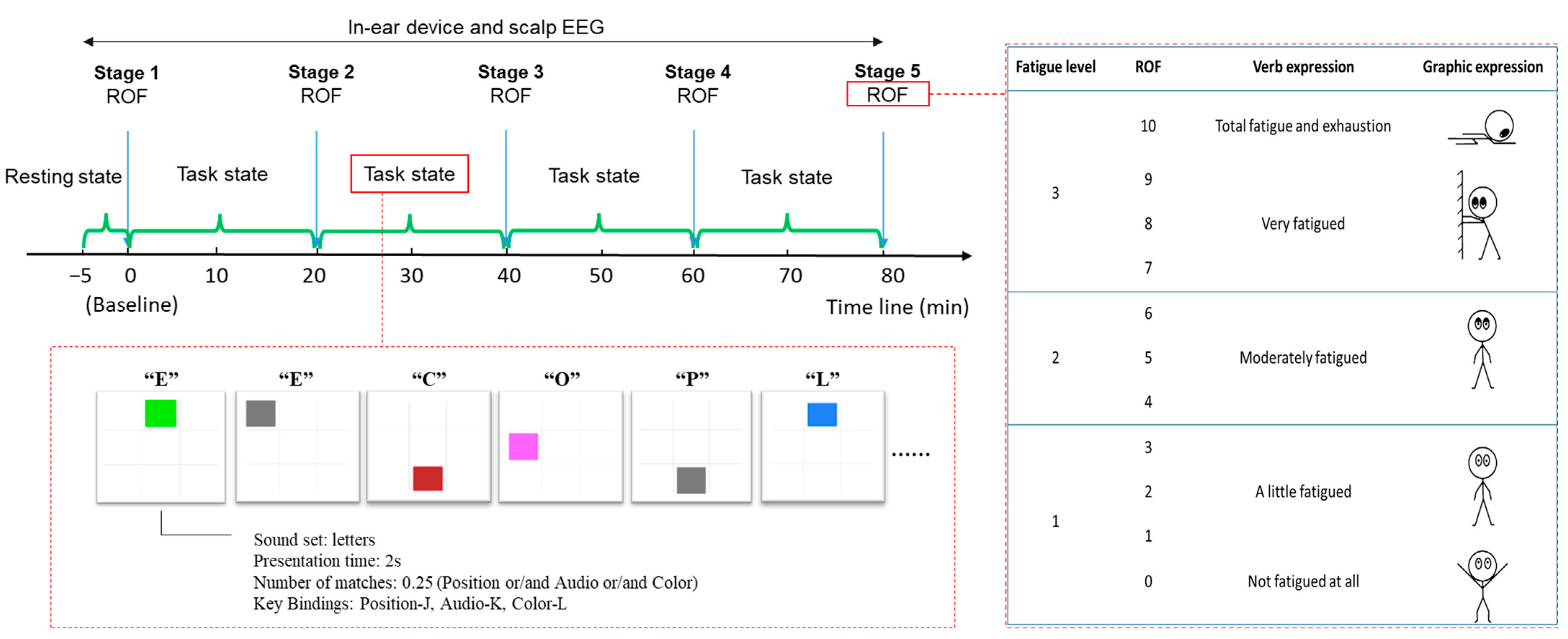
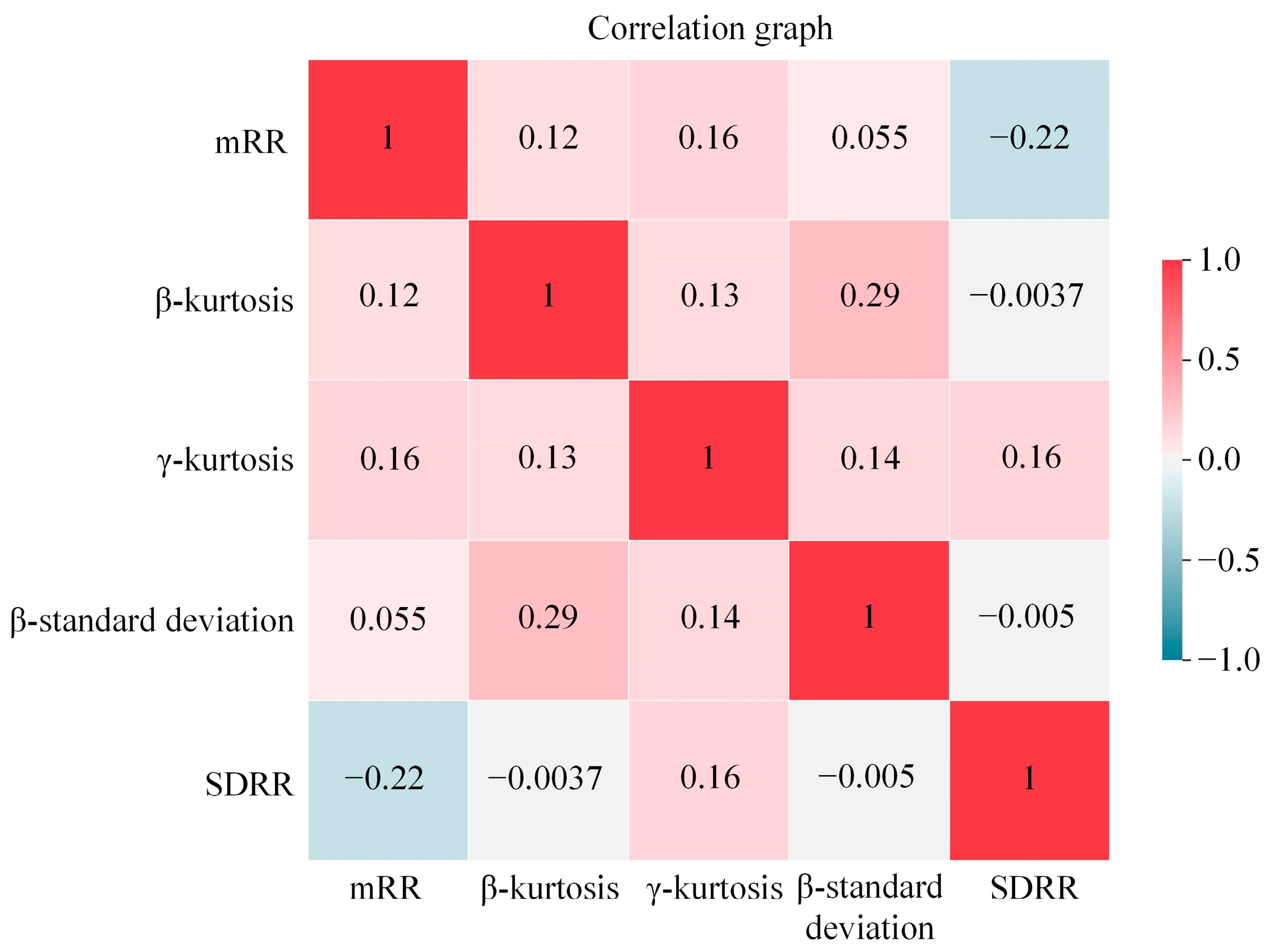
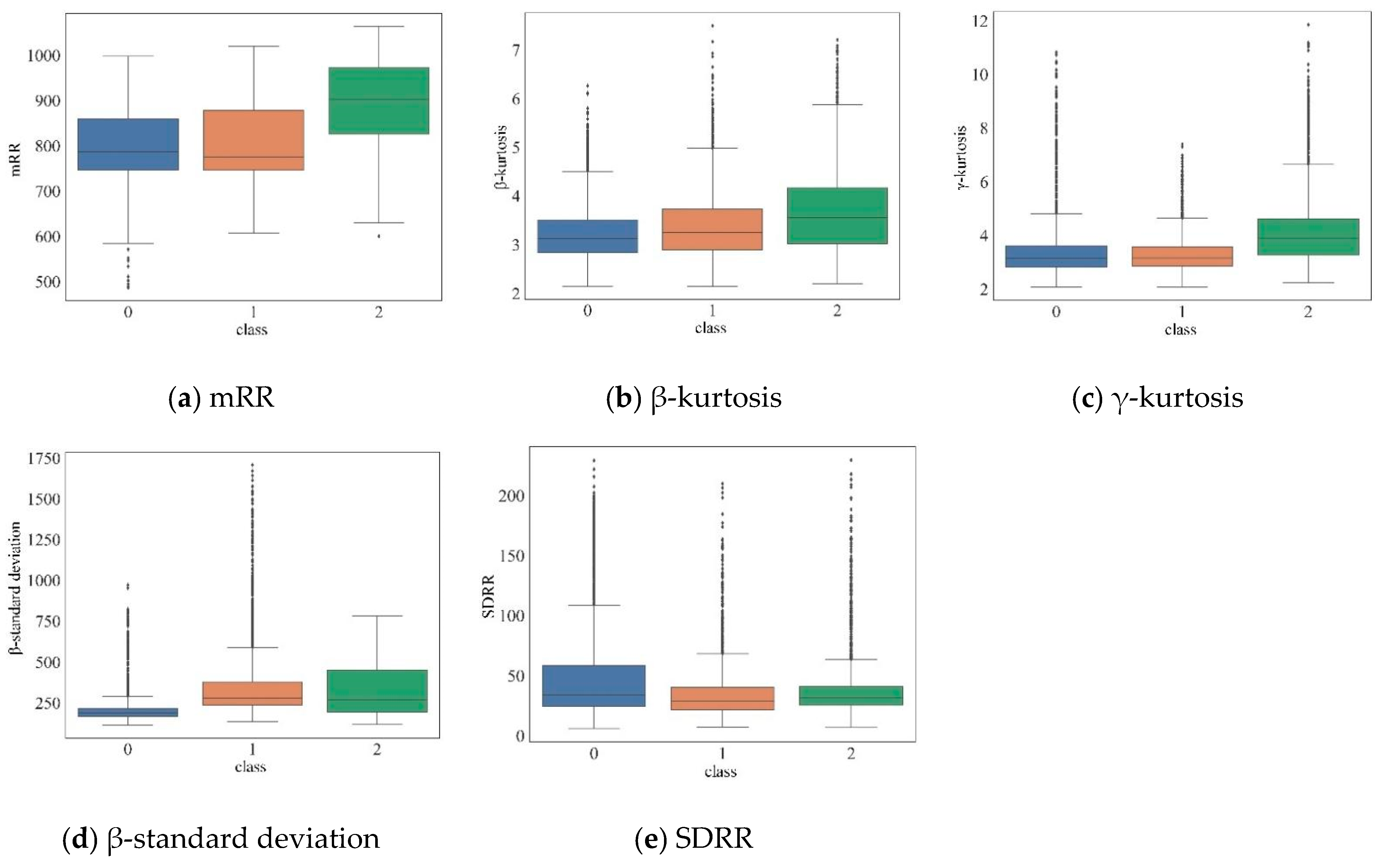

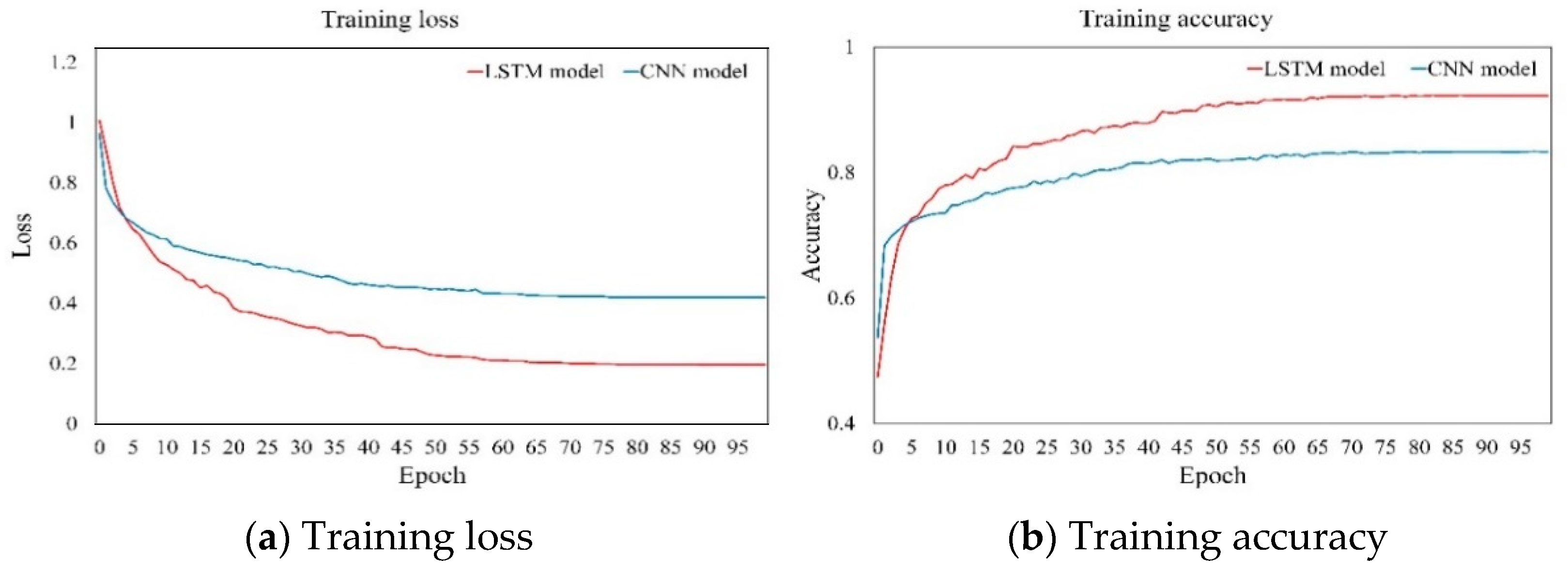
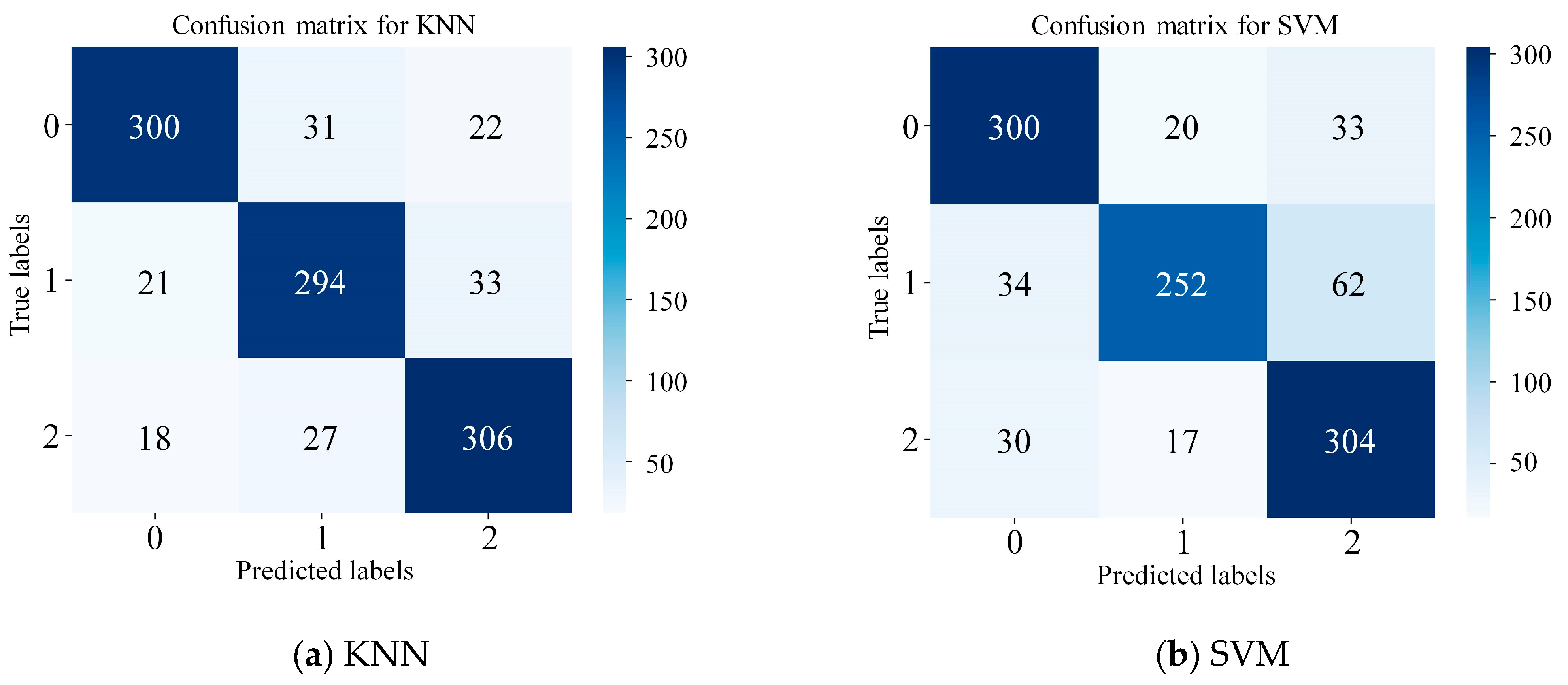
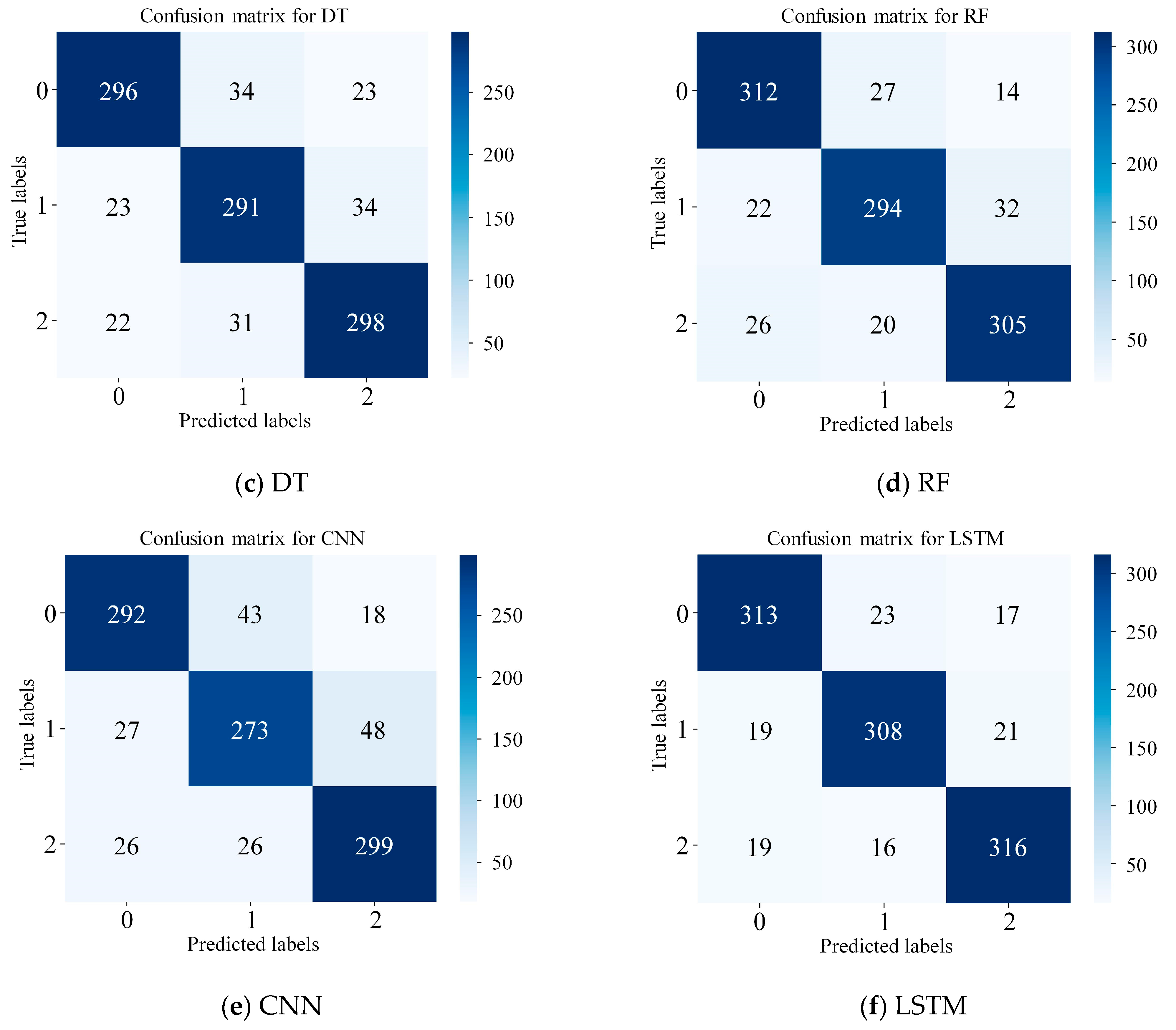
| Ear-EEG Type | Application | Selected Feature | Reference |
|---|---|---|---|
| Around-ear EEG | Auditory attention | Event-related potential | [54] |
| In-ear EEG | Sleep monitoring | Multi-scale fuzzy entropy | [55] |
| Around-ear EEG | Cognitive tasks | Common spatial pattern | [56] |
| In-ear EEG | Sleep monitoring | Power spectral density | [57] |
| In-ear EEG | Attention classification | Power spectral density and temporal features | [58] |
| In-ear EEG | Sleep staging assessment | Power spectral density and temporal features | [59] |
| Around-ear EEG | Eye-state identification | Filtered time-series | [60] |
| No. | Age | Gender | Total Number | Features |
|---|---|---|---|---|
| 1 | 28 | Male | 8 | Graduate students who possessed practical experience in the fields of construction engineering and management |
| 2 | 27 | |||
| 3 | 25 | |||
| 4 | 28 | |||
| 5 | 28 | |||
| 6 | 28 | |||
| 7 | 27 | |||
| 8 | 25 | |||
| 9 | 30 | Male | 8 | Individuals involved in work related to engineering management. |
| 10 | 33 | |||
| 11 | 29 | |||
| 12 | 32 | |||
| 13 | 30 | |||
| 14 | 29 | |||
| 15 | 31 | |||
| 16 | 35 |
| Signal Type | EEG Signals | Frequency | Extracted Features | Number |
|---|---|---|---|---|
| In-ear EEG | delta (δ) | 0.5–4 Hz | Mean amplitude, standard deviation, peak-to-peak amplitude, skewness and kurtosis calculated from waves of δ, θ, α, β and γ. | 25 |
| theta (θ) | 4–8 Hz | |||
| alpha (α) | 8–13 Hz | |||
| beta (β) | 13–30 Hz | |||
| gamma (γ) | 30–40 Hz |
| Signal Type | Extracted Features | Description | Number |
|---|---|---|---|
| ECG | mRR | Mean duration between two consecutive R waves (R-R intervals) in the QRS signal on ECG. | 6 |
| SDRR | Standard deviation of all of the R-R intervals. | ||
| RMSSD | Root mean of the squared differences between consecutive RR intervals. | ||
| LF-HRV | Normalization of the low-frequency band in heart rate variability (HRV). | ||
| HF-HRV | Normalization of the high-frequency band in heart rate variability (HRV). | ||
| LF/HF | Normalized ratio between the LF-HRV and the HF-HRV. |
| No. | Features Combinations | Merit Values |
|---|---|---|
| 1 | mRR | 0.420 |
| 2 | mRR, β-kurtosis | 0.488 |
| 3 | mRR, β-kurtosis, γ-kurtosis | 0.515 |
| 4 | mRR, β-kurtosis, γ-kurtosis, β-standard deviation | 0.520 |
| 5 | mRR, β-kurtosis, γ-kurtosis, β-standard deviation, SDRR | 0.521 |
| Models | Hyperparameters |
|---|---|
| KNN | 1. metric: “chebyshev”, “euclidean”, “manhattan” or “minkowski”. 2. n_neighbors: count of nearest neighbors to consider during the classification process. 3. weights: weighting method: “uniform” or “distance”. |
| SVM | 1. C: regularization parameter. 2. kernel: kernel function: “linear”, “poly”, “sigmoid”, or “rbf”. |
| DT | 1. max_depth: the maximum number of levels that the tree can grow. 2. criterion: metric employed to assess the quality of a split. 3. max_features: the maximum number of features to consider when looking for the best split. 4. min_samples_leaf: the minimum number of data samples needed in a leaf node. |
| RF | 1. n_estimators: the count of decision trees to be constructed in the ensemble of random forests. 2. min_samples_split: the minimum number of data samples needed at an internal node in order to perform a split. 3. min_samples_leaf: the minimum number of data samples needed to form a leaf node. 4. max_features: the upper limit on the number of features considered during the splitting process of a node. 5. max_depth: the maximum number of levels or depth that a decision tree can reach within the ensemble. 6. bootstrap: the specific sampling method used during the construction of decision trees. |
| Steps | Description |
|---|---|
| 1 | Randomly partition the entire dataset into a training set and a test set. |
| 2 | Define the grid search space and determine the hyperparameters for each model. |
| 3 | Divide the training set into k subsets, reserving one subset as the validation data for evaluating the prediction performance of each model with different hyperparameter combinations. The remaining k − 1 subsets are used for training the model. |
| 4 | Repeat the process in Step 3 for k times, ensuring that each subset is used as the validation data exactly once. |
| 5 | Iterate through all hyperparameter combinations of the models, repeating Steps 3 and 4 for each combination. |
| 6 | Identify the hyperparameter combination that achieves the highest score for each model from the k-time training and validation. Utilize this optimal hyperparameter combination to evaluate the mental fatigue classification performance on the test set. |
| Models | Hyperparameter | Value | macroP | macroR | macroF1 | Average Accuracy |
|---|---|---|---|---|---|---|
| KNN | metric | “manhattan” | 85.594% | 85.549% | 85.572% | 89.880% |
| neighbors | 6 | |||||
| weights | “distance” | |||||
| SVM | C | 1000 | 81.935% | 81.336% | 81.634% | 86.757% |
| kernel | “rbf” | |||||
| DT | max_depth | “None” | 84.060% | 84.029% | 84.044% | 88.826% |
| criterion | “entropy” | |||||
| max_features | 8 | |||||
| min_samples_leaf | 1 | |||||
| RF | n_estimators | 2240 | 86.888% | 86.871% | 86.879% | 90.647% |
| min_samples_split | 60 | |||||
| min_samples_leaf | 8 | |||||
| max_features | “auto” | |||||
| max_depth | 20 | |||||
| bootstrap | “False” | |||||
| CNN | 1st convolutional layer: filters; kernel_size | 64; 2 | 82.127% | 82.118% | 82.122% | 87.332% |
| 2nd convolutional layer: filters; kernel_size | 64; 3 | |||||
| LSTM | number of LSTM unit | 256 | 89.067% | 89.068% | 89.068% | 92.437% |
| number of LSTM layers | 2 |
Disclaimer/Publisher’s Note: The statements, opinions and data contained in all publications are solely those of the individual author(s) and contributor(s) and not of MDPI and/or the editor(s). MDPI and/or the editor(s) disclaim responsibility for any injury to people or property resulting from any ideas, methods, instructions or products referred to in the content. |
© 2024 by the authors. Licensee MDPI, Basel, Switzerland. This article is an open access article distributed under the terms and conditions of the Creative Commons Attribution (CC BY) license (https://creativecommons.org/licenses/by/4.0/).
Share and Cite
Fang, X.; Li, H.; Ma, J.; Xing, X.; Fu, Z.; Antwi-Afari, M.F.; Umer, W. Assessment of Construction Workers’ Spontaneous Mental Fatigue Based on Non-Invasive and Multimodal In-Ear EEG Sensors. Buildings 2024, 14, 2793. https://doi.org/10.3390/buildings14092793
Fang X, Li H, Ma J, Xing X, Fu Z, Antwi-Afari MF, Umer W. Assessment of Construction Workers’ Spontaneous Mental Fatigue Based on Non-Invasive and Multimodal In-Ear EEG Sensors. Buildings. 2024; 14(9):2793. https://doi.org/10.3390/buildings14092793
Chicago/Turabian StyleFang, Xin, Heng Li, Jie Ma, Xuejiao Xing, Zhibo Fu, Maxwell Fordjour Antwi-Afari, and Waleed Umer. 2024. "Assessment of Construction Workers’ Spontaneous Mental Fatigue Based on Non-Invasive and Multimodal In-Ear EEG Sensors" Buildings 14, no. 9: 2793. https://doi.org/10.3390/buildings14092793








